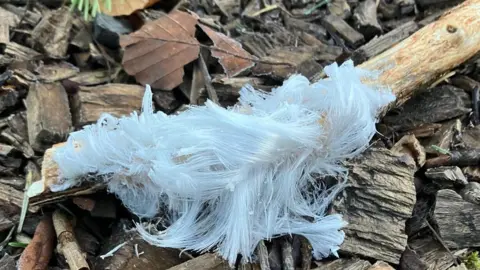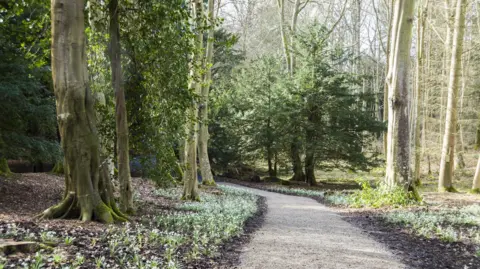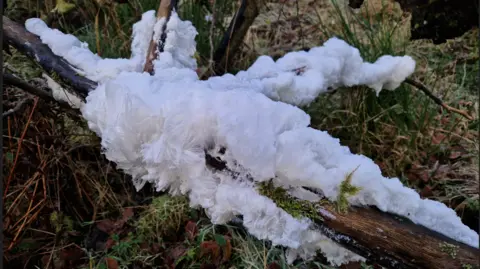Rare 'hair ice' found in woodlands for second year
 Charlie Goulty
Charlie GoultyA rare ice formation which only occurs in specific conditions has been spotted in the same woods two winters in a row.
Known as hair ice, staff at the National Trust's Wallington Estate in Northumberland have described the phenomenon as "just magical".
It occurs when the temperature is slightly below freezing and the presence of a particular fungus in rotting wood produces thin strands of ice which resemble hair or candy floss.
Ranger Nick Allen said: "It doesn't seem like something like that should exist in the world, but it does."
 National Trust
National TrustAccording to the Met Office, one of the first records of the phenomenon was made by the German meteorologist Alfred Wegener in 1918.
He observed a strange ice forming only on wet dead wood and proposed a theory that a specific fungi must be the catalyst.
In 2015, the scientists identified it as a fungus called Exidiopsis effusa.
"Last year I found the biggest clump I've ever seen and we put a post on social media and it really seemed to interest people," Mr Allen said.
Many had spotted it themselves and did not know how it was formed.
 Nick Allen
Nick Allen"It's one thing seeing it in a picture but it's quite something to hold it, just tiny crystals of ice in strands, it's just so magic and so fragile," he added.
Mr Allen said Wallington was an "ideal place" to see hair ice because there were so many deciduous trees, particularly beech, and so much dead wood on the ground.
"You've got to know what to look for and where to look though, you don't see it all that often," he added.
